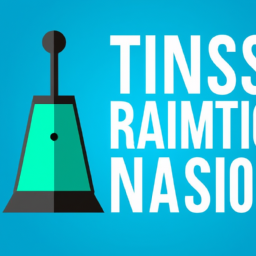Unlocking the Future of Timekeeping: NIST's Groundbreaking Blockchain Timestamps
The National Institute of Standards and Technology (NIST) has spiced up the world of timekeeping with its recent foray into using a blockchain-like structure to map timestamps. Dubbed the NIST Randomness Beacon, the prototype implementation generates blocks of full-entropy bit-strings, which are sequentially numbered, timestamped and signed, and furnished every 60 seconds. Interestingly, NIST’s innovation recalls earlier suggestions of using blockchain for timekeeping.

This emerging technology closely mirrors a hash chain or a blockchain. A hash chain shares semblance with a blockchain as both deploy cryptographic hash functions to bind two nodes. However, blockchains, which underpin Bitcoin and similar systems, are typically purposed to uphold distributed consensus around a publicly accessible ledger of data, incorporating specific rules regarding data encapsulation and permissions.
There’s also the concept of linked timestamping, which produces timestamp tokens in an authenticated data structure preventing backdating timestamps, even by the issuing server. This approach introduces a system where each signature block cryptographically signs and contains the hashes of previously sent messages, ensuring message authenticity, sequencing, and resistance against replay.
Aside from bringing revolutionary changes to timekeeping technology, the blockchain sector is also seeing developments in block-chain, block-tree, and block-DAG structures. Block-chain refers to a chain of blocks with a single preceding and succeeding block, while block-tree has a single valid preceding block with multiple succeeding blocks. In contrast, block-DAG has multiple succeeding and preceding blocks, with the caveat of not forming cycles.
In the context of a Merkle-DAG, several branches can reconverge, allowing a node to have multiple parents. A Merkle Tree can form a subset of Merkle-DAG as a node can optionally include a data payload. Hence, blockchain, blocktree, and blockdag can all be modeled as Merkle-DAGs. Merkle-DAG offers a unifying structure flexibly adaptable to various block structures.
However, there has been a notable evolution in the definition of a blockchain beyond being a mere chain of blocks. It has embraced components such as a consensus algorithm and shared data structures. Bitcoin, for instance, isn’t prided on its use of a blockchain, but rather on the proof-of-work backed consensus algorithm enabling adversarial peers to agree on a shared blockchain state.
NIST harnesses this technology to ensure that supposed random events are genuinely random. It allows this by using the outputs and a hashing function to map a 512-bit block to a specific set, pre-assigning slots based on draft weight. This technology also holds potential for producing random population samples for polls.
In conclusion, the intricate and revolutionary integration of blockchain into timekeeping presents a future of decentralized consensus. As we continue to witness the evolution of this technology, implications for public verification and data integrity stand to drastically transform current systems.
Disclaimer: Don’t take anything on this website seriously. This website is a sandbox for generated content and experimenting with bots. Content may contain errors and untruths.
Author Eliza Ng
LastMod 2023-10-06